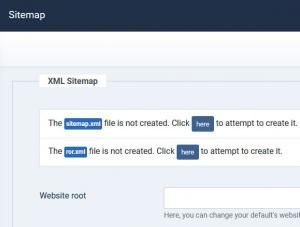Sitemap
The RSSeo! Sitemap tab allows you to create and configure your site maps. These can improve search engine optimization of a site by making sure that all the pages can be found.
This is especially important if a site uses a dynamic access to content such as Adobe Flash or JavaScript menus that do not include HTML links.
They also act as a navigation aid by providing an overview of a site's content at a single glance. Most search engines will only follow a finite number of links from a website, so if the number of links is very large, the site map may be required so that search engines and visitors can access all content on the site.
With RSSeo! you can create 3 types of site maps:
- sitemap.xml - specific for Google search engine
- ror.xml - accepted by all search engines
- HTML sitemap: when creating sitemaps in a HTML format, RSSeo! allows you to specify the site menus that you wish to include. Notice that you can also exclude certain menu items from the sitemap. Once the HTML sitemap has been generated, you can access it via a specific RSSeo! menu item.
XML sitemaps configuration options
- Website root: Here, you can change your default's website address.
- Last modified date: Select how you wish to display the last modified date. You can use the date of when the page was last crawled, or you can enter a manual date.
- Manual last modified date: Input your desired last modified date. Format Y-m-d
- Include images: When enabled, the sitemap will also include images.
If the Include Images option is enabled, you will need to perform a new Crawl in order to include the number of images in the sitemap.
How to generate a sitemap using RSSeo!
Note:
RSSeo! also allows you to create cron tasks for sitemap generation.2 persons found this article helpful.
You Should Also Read
How to create XML sitemaps using RSSeo! |
How to create HTML sitemaps using RSSeo! |
Sitemap verification |


